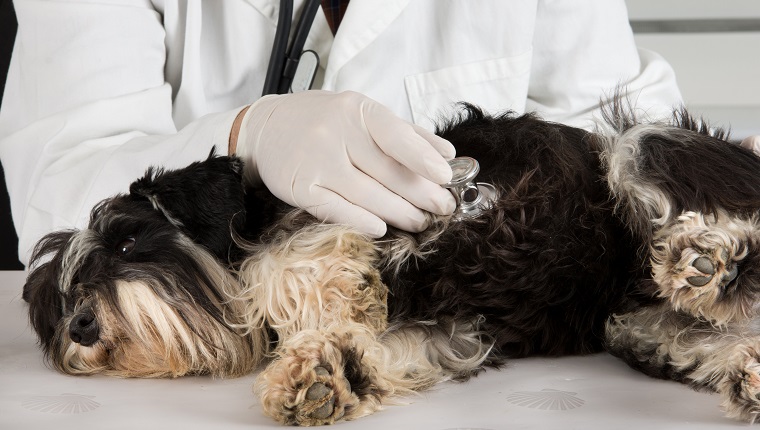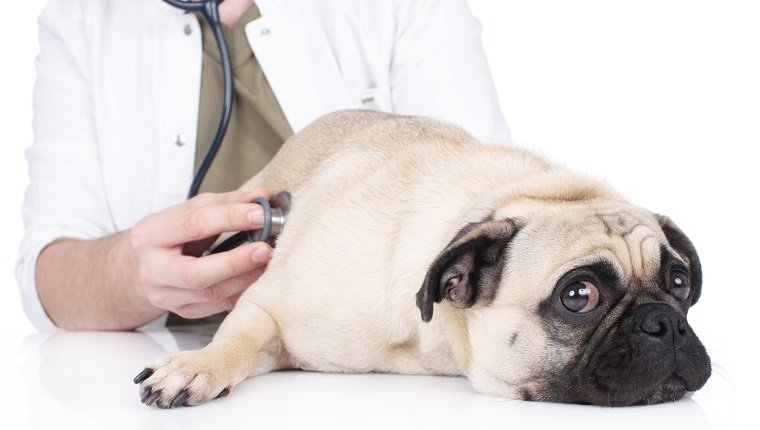Digoxin is a drug that is used to treat congestive heart failure in dogs, as well as other heart diseases and conditions. Veterinarians usually prescribe it along with other medications such as diuretics and enzyme inhibitors, and it may go by the brand names Cardoxin or Lanoxin.
The drug works by increasing the amount of calcium available to the heart, which is essential for muscle contraction. This strengthens the heart beat, slows the heart down, and decreases the size of the heart. The amount of blood that the heart pumps increases, and fluid build-up in the lungs is reduced.
Digoxin is a powerful medication and should be used with caution, as overdose is common. Follow your veterinarian’s instructions closely when giving it to your dog.
You can easily order digoxin online from Chewy’s pharmacy with your vet’s prescription.
Here’s what you should know about the uses, dosage, and side effects of digoxin for dogs.
Uses Of Digoxin For Dogs

Digoxin is primarily prescribed to treat congestive heart failure in dogs, but it may also be used to treat a variety of heart diseases or conditions because it helps control heart rate and size, blood pressure, and blood volume. It can help reduce the effects of edema and work as a diuretic to increase urination, as well.
The drug can correct conditions where there are irregularities and abnormalities in heart rhythm such as atrial fibrillation, cardiac arrhythmias, and supraventricular tachycardia.
It can also reduce heart size in dogs who suffer from dilated cardiomyopathy (enlarged and weak heart).
Dosage Of Digoxin For Dogs

The following is a guideline and should not replace your veterinarian’s advice for your individual dog.
The usual dosage of digoxin for dogs is 0.0025 to 0.005 mg per pound, which is administered every 12 hours and is usually available in 0.125 mg and 0.25 mg tablets.
It’s a very powerful drug, and you must follow your vet’s instructions for dosage closely. Overdose is common and can cause serious complications.
You should also not stop giving your dog digoxin suddenly, as this can make heart conditions worse.
Side Effects Of Digoxin In Dogs

There are several possible side effects of digoxin in dogs because the drug is so powerful. In fact, digoxin is toxic to some animals.
Collies in particular are more susceptible to the effects digoxin can have on the central nervous system.
Sometimes digoxin can make heart conditions worse, rather than improving symptoms. If your veterinarian prescribes this drug, monitor your dog closely, and if side effects become severe, seek medical attention immediately. Your vet may wish to alter your dog’s dosage or seek an alternative form of treatment.
Here are a few other side effects you might see in dogs who take digoxin:
- Nausea or vomiting
- Diarrhea
- Loss of appetite
- Dehydration
- Lethargy or depression
- Tiredness or weakness
- Dizziness
- Drowsiness
- Irregular heart beat
- Balance problems or wobbly gait
Make your vet aware of any other medical conditions your dog has, as these can worsen when taking digoxin. Also make sure your vet knows about any other medications your dog is taking, even over-the-counter drugs, because these may react poorly with digoxin.
There’s a risk of allergic reaction in dogs, as with all medication, that could lead to anaphylaxis. If you see the signs of an allergic reaction in your dog, consult your vet right away.
Has your dog ever taken digoxin? Did it help to treat their condition? Let us know in the comments below!









